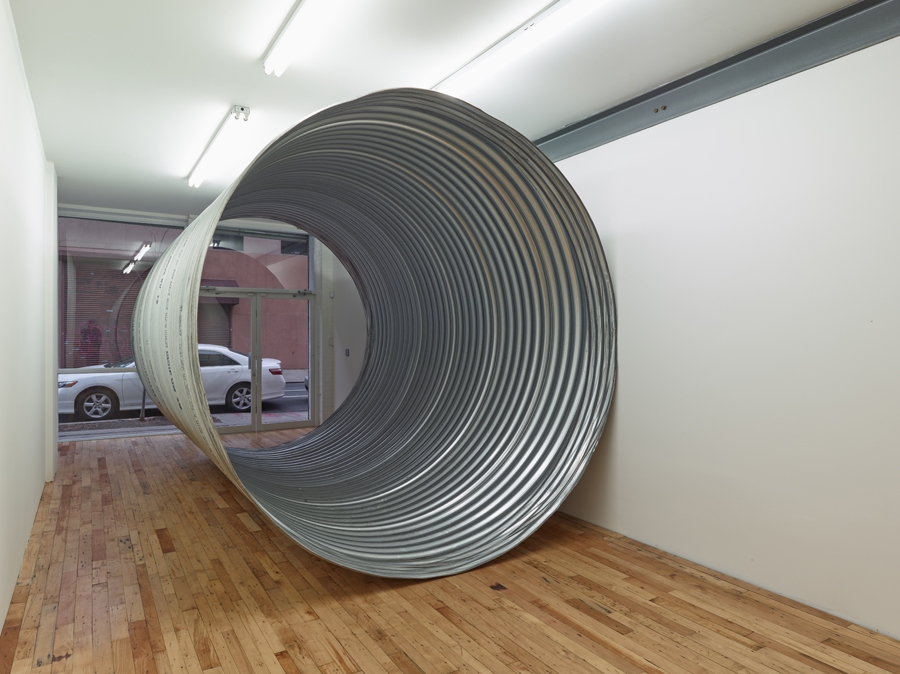Charles Harlan’s Cave is nothing if not simple. The show consists of one work, but it’s a whammy: Pipe (2013), a piece of steel piping about 4.5m long, with a 3m diameter. Weighing close to a ton, it rests against one wall of the gallery with a dumb, brute presence, and is held in place with wood stoppers so it doesn’t roll over and crush any little children who choose to run around its curving, ribbed form (though that might do everyone a favour). Thin and hollow, it’s like a culvert one would find in the suburbs, meaning it doubles as a creepy place in which to light fireworks, make out or dump the body parts of loved ones. Comically out of place in a gallery, Pipe is a deadpan, Duchampian joke rich with meaning and associations, proving that simple needn’t mean one-note.
Harlan was raised in Smyrna, Georgia, and his work exhibits a vernacular, domestic flair, as if the suburban housing tracts featured in Dan Graham’s Homes for America (1966) were taken apart and repurposed as elegant, redneck Minimalism. With Shingles (2011), for example, Carl Andre’s floor-based metal works meet their working-class counterpart, as copper plates are exchanged for patterns of overlapping asphalt roofing tiles; Siding (2011), meanwhile, replaces Donald Judd’s shiny metal cubes with the work’s namesake – and very plebeian – exterior vinyl wallcovering found on many a tract house; and by simply lifting a marble countertop off the bathroom sink and onto the wall, Counter (2012) proves that even the slightest of gestures, such as a change of orientation and context, can render foreign something familiar – the everyday as convincing art object. Similarly, with Pipe, it’s as if one of Nancy Holt’s Sun Tunnels (1976) was transported from the desert to this small, white cube gallery on the Lower East Side.
That Cave is concurrent with Jay DeFeo’s Whitney retrospective is more than telling. DeFeo had to cut out part of a window and wall to remove her one-ton painting The Rose (1958–66) from her studio. Harlan, dealing with an object of similar weight, had to hire a team of construction workers to completely disassemble the gallery’s storefront, as well as the tree in front of it, and then to put it all back together again as if nothing had happened.
Equally industrial as Holt’s work, though perhaps more refined-looking with its clean metal surface and, when struck, resonant timbre, Harlan’s invasive culvert more closely pressures the thin distinction between rote object and institutionally legitimated artwork. Even if they’re in the middle of nowhere, Holt’s tunnels are art because the artist presents them as such; Pipe is equally authored and institutionalised. That it’s a pipe is precisely the point. While it’s a beautiful object, it illustrates how arbitrary ‘art’ really is. The term may designate anything, from a painting to a pickle in a jar. The latter, displayed in the gallery’s back office, is sold by Harlan’s mother in her hardware store; it could be an artwork too, if he willed it.
This article was first published in the May 2013 issue.
